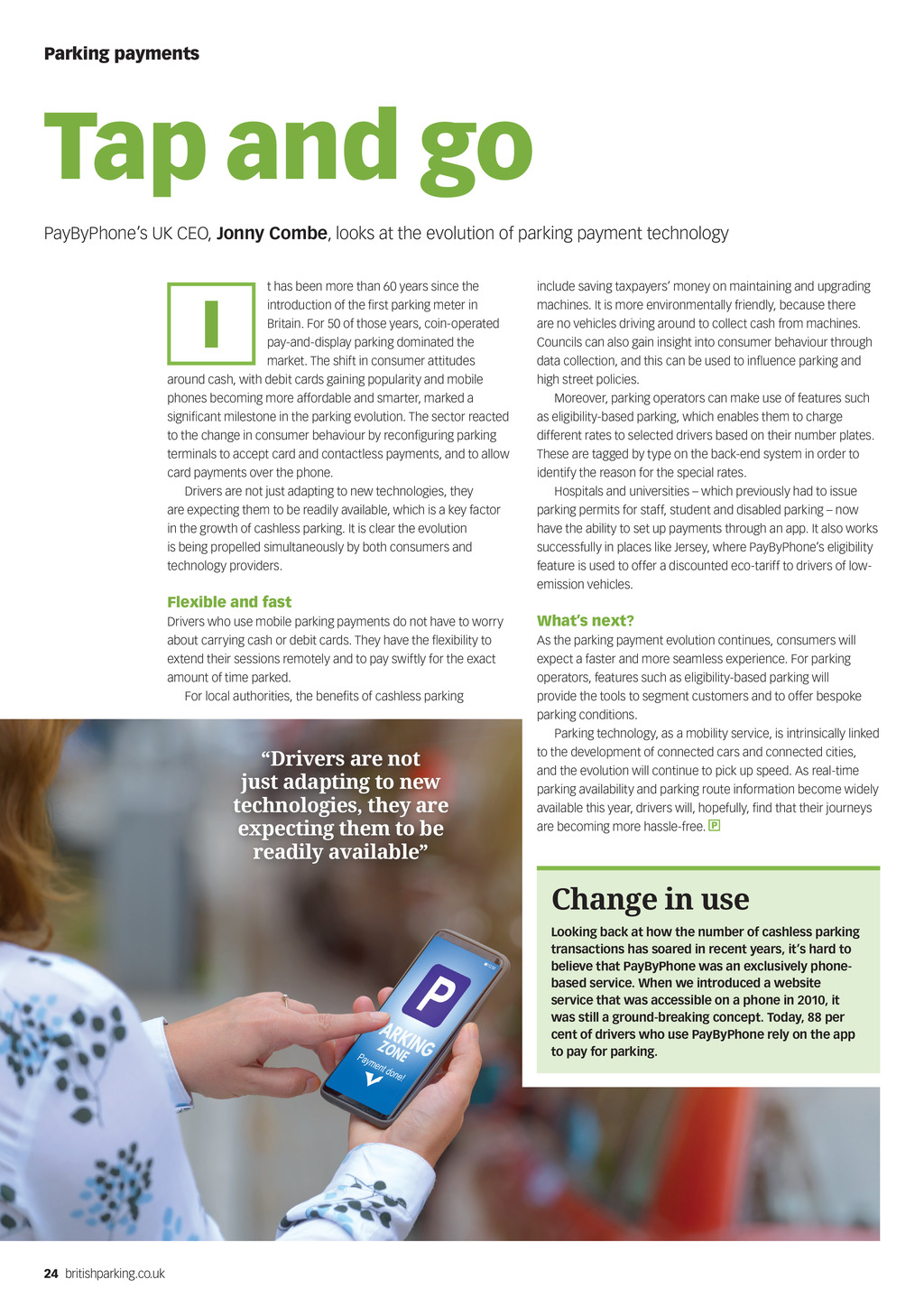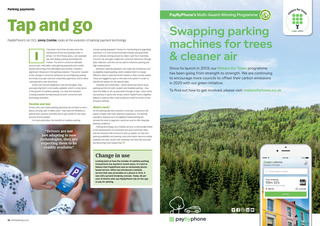


Parking payments Tap and go PayByPhones UK CEO, Jonny Combe, looks at the evolution of parking payment technology t has been more than 60 years since the introduction of the first parking meter in Britain. For 50 of those years, coin-operated pay-and-display parking dominated the market. The shift in consumer attitudes around cash, with debit cards gaining popularity and mobile phones becoming more affordable and smarter, marked a significant milestone in the parking evolution. The sector reacted to the change in consumer behaviour by reconfiguring parking terminals to accept card and contactless payments, and to allow card payments over the phone. Drivers are not just adapting to new technologies, they are expecting them to be readily available, which is a key factor in the growth of cashless parking. It is clear the evolution is being propelled simultaneously by both consumers and technology providers. I include saving taxpayers money on maintaining and upgrading machines. It is more environmentally friendly, because there are no vehicles driving around to collect cash from machines. Councils can also gain insight into consumer behaviour through data collection, and this can be used to influence parking and high street policies. Moreover, parking operators can make use of features such as eligibility-based parking, which enables them to charge different rates to selected drivers based on their number plates. These are tagged by type on the back-end system in order to identify the reason for the special rates. Hospitals and universities which previously had to issue parking permits for staff, student and disabled parking now have the ability to set up payments through an app. It also works successfully in places like Jersey, where PayByPhones eligibility feature is used to offer a discounted eco-tariff to drivers of lowemission vehicles. Flexible and fast Drivers who use mobile parking payments do not have to worry about carrying cash or debit cards. They have the flexibility to extend their sessions remotely and to pay swiftly for the exact amount of time parked. For local authorities, the benefits of cashless parking Drivers are not just adapting to new technologies, they are expecting them to be readily available Whats next? As the parking payment evolution continues, consumers will expect a faster and more seamless experience. For parking operators, features such as eligibility-based parking will provide the tools to segment customers and to offer bespoke parking conditions. Parking technology, as a mobility service, is intrinsically linked to the development of connected cars and connected cities, and the evolution will continue to pick up speed. As real-time parking availability and parking route information become widely available this year, drivers will, hopefully, find that their journeys are becoming more hassle-free. Change in use Looking back at how the number of cashless parking transactions has soared in recent years, its hard to believe that PayByPhone was an exclusively phonebased service. When we introduced a website service that was accessible on a phone in 2010, it was still a ground-breaking concept. Today, 88 per cent of drivers who use PayByPhone rely on the app to pay for parking. 24 britishparking.co.uk PN Apr20 pp24-25 Parking payments Feature.indd 24 24/03/2020 14:15